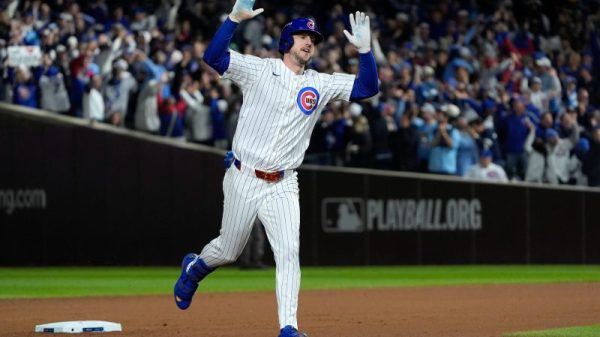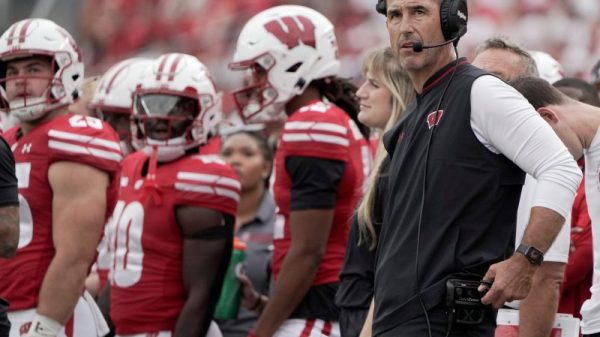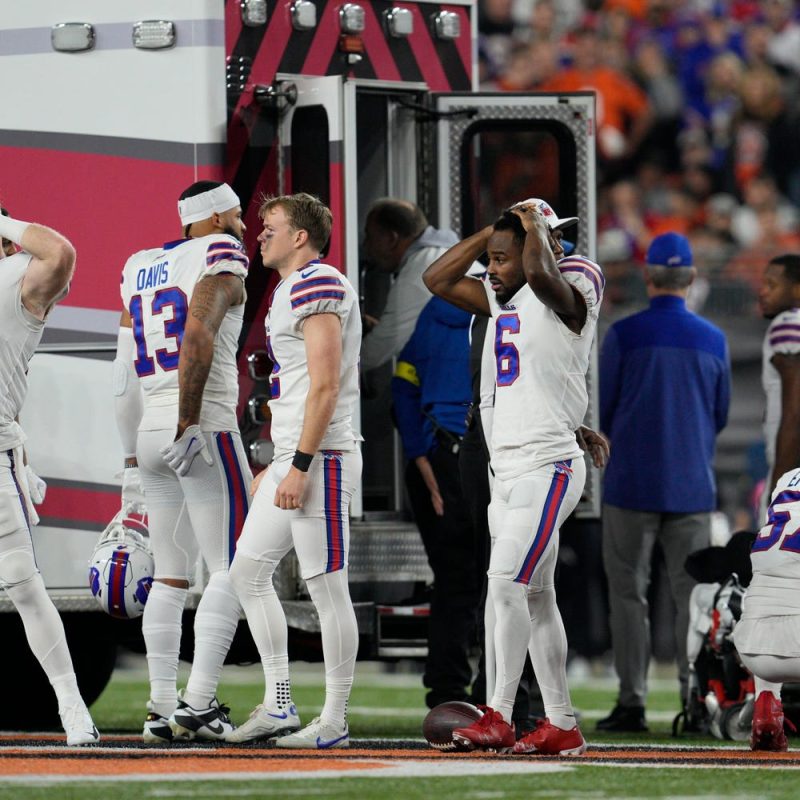Buffalo Bills safety Damar Hamlin remained in critical condition at a hospital Tuesday afternoon after he collapsed following a seemingly routine tackle in a game against the Cincinnati Bengals during Monday Night Football.
The 24-year-old defensive back’s medical episode occurred with just minutes remaining in the first quarter when he tackled Bengals wide receiver Tee Higgins after a 13-yard gain at Paycor Stadium. What happened next was anything but routine.
Players gathered around Hamlin. An ambulance was brought onto the field. Officials suspended the game.
The Bills announced early Tuesday that Hamlin suffered a cardiac arrest. The NFL confirmed to USA TODAY an AED (automated external defibrillator) was used on the field before Hamlin’s heartbeat was restored. He was then transferred to the University of Cincinnati Medical Center for further testing and treatment as he was sedated and clinging to life.
But what is cardiac arrest, and how might it have happened to Hamlin?
What is cardiac arrest? What is commotio cordis?
Sudden cardiac arrest happens when the heart abruptly loses its normal rhythm and stops pumping blood, according to the Sports Institute, part of the University of Washington School of Medicine system. If immediate emergency actions are not taken, death or serious disability can occur.
It is usually caused by abnormalities of the heart, which are often inherited but can remain undiagnosed and go undetected.
‘Football, however, has shoulder pads that cover the chest wall,’ Dr. David H. Sohn, who specializes in Orthopaedic Surgery and Sports Medicine at The University of Toledo Medical Center told USA TODAY. ‘Commotio cordis is most common in the young athlete whose musculature is not as developed as that in an adult.
‘That said, it does happen in professional adult athletes as well. For example, in 1998, St. Louis Blues defenseman Chris Pronger was hit by a hockey puck and collapsed from commotio cordis,’ Sohn said.
Cardiac arrest can stem from a variety of other things too, Dr. Alex Jahangir, executive medical director of Vanderbilt University Medical Center for Trauma, Burn, and Emergency Surgery in Nashville, told USA TODAY on Tuesday.
‘In some people’s case, a blood vessel gets clogged in the heart because they don’t have enough oxygen. Some people get electrocuted. Some are shot in the heart,’ said Jahangir, who has treated professional athletes over his nearly two-decade career.
‘The way the heart beats regularly, there is an igniter that sends an electric signal to the heart,’ he said. ‘If all the sudden for whatever reason (like) in this case, you take a sudden hit and that igniter doesn’t ignite or the heart’s regular rhythm gets interrupted – each heart cell fibrillates in an uncoordinated fashion.’
That’s when a person no longer has a normal heartbeat.
‘The good thing is, the moment you use a defibrillator – like turning a TV off and on, the blood starts flowing and everything comes back to normal,’ Jahangir said. ‘It’s sounds like that’s what they did in this case (for Hamlin).’
Commotio cordis is different from a cardiac contusion (contusio cordis), an event in which blunt chest trauma causes structural cardiac damage, such as observed in motor vehicle accidents, according to the American Heart Association.
How rare is cardiac arrest among athletes?
About 1 or 2 in every 100,000 athletes experience sudden cardiac arrest each year, according to the Sports Institute. Men are at a greater risk than women, and Black athletes are at a greater risk than white athletes.
The risk is higher in football and basketball.
Estimates vary, but according to The Mayo Clinic, some reports suggest that about 1 in 50,000 to 1 in 80,000 young athletes die of sudden cardiac arrest every year.
What are long-term effects of cardiac arrest?
Most people who suffer cardiac arrest do not survive, according to the New York University Grossman School of Medicine, but those who live are at risk of neurological consequences and changes to physical and psychological wellness.
The most common neurological consequence of cardiac arrest is hypoxic-ischemic brain injury, which can result in neuronal damage and death, according to NYU. The injury – a leading cause of significant disability or death after resuscitation – is named for the factor that triggers it (lack of oxygen, or hypoxia) and its effect on the cells. It occurs when the heart is restarted and is a result of the interaction of oxygen, which has been returned to the brain, with highly reactive metabolites produced in the brain during cardiac arrest.
In addition to brain injury, among those who live, there is risk of consciousness disorder, neurocognitive deficits, and changes in quality of life.
Hamlin’s toy drive gets boost:GoFundMe children’s toy drive created by Damar Hamlin gets huge boost after injury
Can sudden cardiac arrest be prevented?
To reduce your risk of sudden cardiac arrest, the Mayo Clinic recommends getting regular checkups, being screened for heart disease and living a heart-healthy life.
If you survive sudden cardiac arrest, your doctor will try to learn what caused it to help prevent future episodes. Tests your doctor may recommend include:
Electrocardiogram (ECG): During an ECG, sensors (electrodes) that can detect the electrical activity of your heart are attached to your chest and sometimes to your limbs. An ECG can reveal disturbances in heart rhythm or detect abnormal electrical patterns, such as a prolonged QT interval, that increase your risk of sudden death.Blood tests: A sample of your blood might be tested to check the levels of potassium, magnesium, hormones and other chemicals that can affect your heart’s ability to function. Other blood tests can detect recent heart injury and heart attacks.
Imaging tests are also used in treatment. These might include:
Chest X-ray. This allows your doctor to check the size and shape of your heart and its blood vessels. It might also show whether you have heart failure.Echocardiogram. This test uses sound waves to produce an image of your heart. It can help identify whether an area of your heart has been damaged by a heart attack and isn’t pumping hard enough.
What is a cardiac contusion?
A cardiac contusion (contusio cordis) is a bruise to the heart which, in isolation, doesn’t necessarily result in cardiac arrest, said Jahangir, who is also a professor of orthopedic surgery at VUMC.
In addition to car crashes, falls often cause the injury.
‘But a cardiac contusion may or may not lead to cardiac arrest,’ Jahangir said. ‘Just like if I hit you in the thigh and you get a bruise, you quad muscle may be sore but hopefully eventually the muscle comes back to function normally.’
In extreme cases, he said, some people including athletes, suffer an especially hard hit and sustain significant scar tissue which can lead to them not having the strength they used to have.
Treatment of cardiac contusions (bruising) depends on the complications that may happen after the blunt cardiac injury. Recovery depends on the severity of a person’s injury, but most people make a full recovery.
‘Long-term effects of cardiac contusion are hard to define,’ Jahangir said. ‘You don’t know the long-term impact to the muscle. If the heart muscle doesn’t die or have some type of long term impact, hopefully you’ll be fine.’
But if a portion of the heart muscle dies, he said, a person may have long-term consequences.
‘It could be anything from you can’t run as far, you’re always short of breath and need to be on medicine, or you need to have a pacemaker.’
Natalie Neysa Alund covers trending news for USA TODAY. Reach her at nalund@usatoday.com and follow her on Twitter @nataliealund.



























